Whole house renovation is a comprehensive process of transforming your home‚ requiring careful planning and execution. A detailed checklist ensures a smooth and stress-free journey.
1.1 What is a Whole House Renovation?
A whole house renovation is a comprehensive transformation of your home‚ involving updates to multiple areas or systems. It goes beyond cosmetic changes‚ often including structural modifications‚ electrical‚ plumbing‚ and insulation upgrades. This process allows homeowners to tailor their living space to their lifestyle‚ preferences‚ and needs. Whether modernizing an older home or reconfiguring the layout‚ a whole house renovation is a major undertaking that requires meticulous planning and coordination. It’s not just about aesthetics; it’s about creating a functional‚ comfortable‚ and beautiful living environment. Such projects can be complex‚ but with a clear plan and expert guidance‚ they can result in a stunning‚ long-lasting transformation.
1.2 Why You Need a Renovation Checklist
A whole house renovation checklist is essential for organizing tasks‚ managing timelines‚ and ensuring no detail is overlooked. It helps prioritize needs‚ track progress‚ and stay within budget. With a checklist‚ you can avoid costly delays‚ communicate clearly with contractors‚ and maintain control over the project. It also serves as a reference point for decision-making‚ ensuring all aspects of the renovation align with your goals. By breaking down the process into manageable steps‚ a checklist reduces stress and helps achieve a successful‚ stress-free renovation. Downloading a whole house renovation checklist PDF provides a structured framework to guide you from planning to completion.
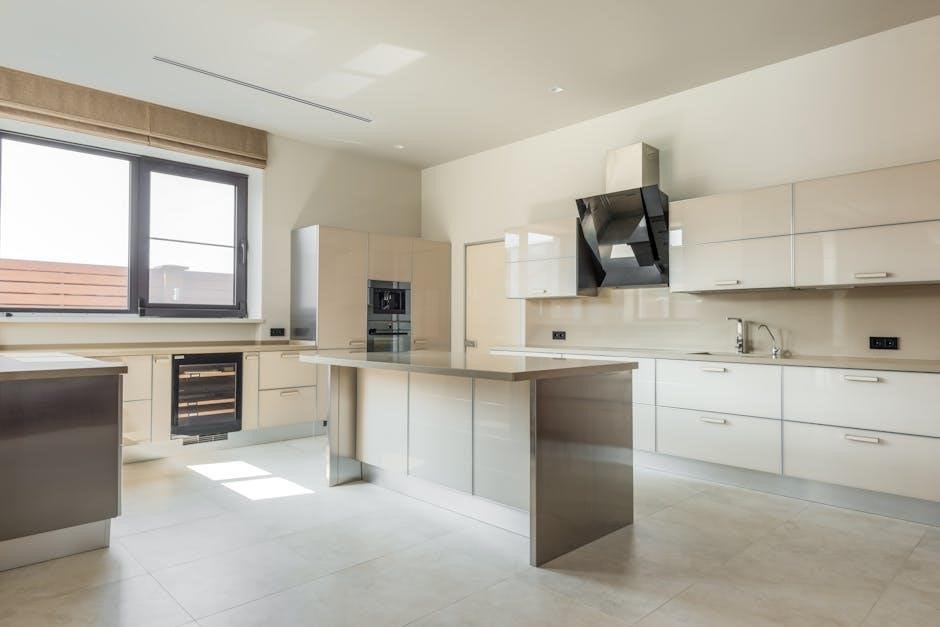
Planning and Preparation
Planning and preparation are crucial for a successful whole house renovation. Define clear objectives‚ allocate funds wisely‚ and hire skilled professionals to ensure your project stays on track.
2.1 Setting Renovation Objectives
Setting clear renovation objectives is crucial for a successful project. Start by assessing your needs and desires‚ ensuring your goals align with your budget and lifestyle. Prioritize must-haves over nice-to-haves to stay focused. Consider how each objective impacts functionality‚ aesthetics‚ and long-term value. For example‚ improving energy efficiency or creating an open floor plan might be key priorities. Write down your objectives and share them with contractors to ensure everyone is on the same page. Regularly reviewing your goals during the renovation helps maintain direction and avoids costly deviations. A well-defined plan sets the foundation for a smooth and satisfying renovation experience;
Tip: Break down objectives into short-term and long-term goals for better clarity.
2.2 Budgeting for Your Renovation
Budgeting is a critical step in whole house renovation. Start by assessing your financial capacity and setting a realistic budget based on the scope of your project. Prioritize must-haves over nice-to-haves to allocate funds effectively. Consider material costs‚ labor fees‚ permits‚ and potential hidden expenses like structural repairs. A contingency fund of 10-20% is recommended for unforeseen issues. Research cost-saving options‚ such as repurposing existing materials or phasing the renovation. Compare quotes from contractors to ensure transparency and fairness. Regularly track expenses to stay within budget. A well-planned budget ensures your renovation stays on course without financial strain.
2.3 Hiring Contractors and Professionals
Hiring reliable contractors and professionals is crucial for a successful renovation. Start by researching licensed contractors in your area‚ checking reviews‚ and requesting referrals. Always verify certifications and insurance. Compare multiple bids to ensure fair pricing and clear scope of work. Clearly communicate your expectations and timelines. Be wary of contractors demanding full payment upfront. Ensure contracts include payment schedules‚ materials‚ and warranties. Don’t hesitate to ask for references and examples of past work. A detailed agreement protects both parties and ensures accountability. Understand who is responsible for obtaining permits and inspections. Request a dedicated project manager for consistent communication. Avoid hiring based solely on the lowest bid—prioritize quality and reputation.
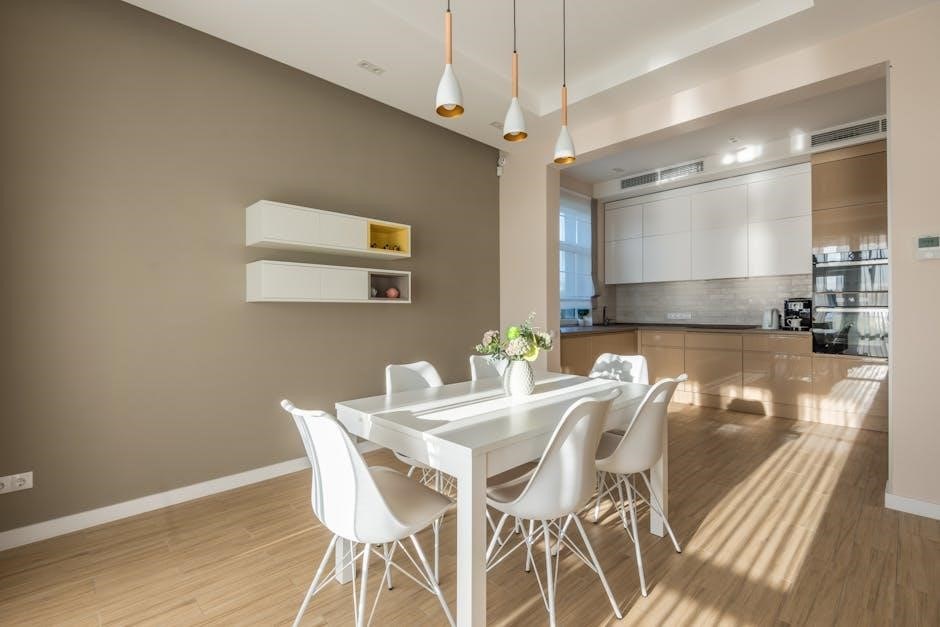
Assessing Your Current Home
Assessing your home’s condition is crucial for a successful renovation. Evaluate structural components‚ inspect electrical and plumbing systems‚ and identify necessary repairs to create an accurate plan.
- Check for structural damage or weaknesses.
- Inspect electrical and plumbing systems for functionality.
- Identify areas needing repair or replacement.
Download our free Whole House Renovation Checklist PDF for a detailed evaluation guide.
3.1 Evaluating Structural Integrity
Evaluating the structural integrity of your home is crucial before starting a renovation. This includes inspecting the foundation‚ walls‚ roof‚ and floors for any signs of damage or weakness. Look for cracks in walls‚ uneven floors‚ or water damage‚ as these can indicate deeper structural issues. Ignoring these problems can lead to safety hazards or costly repairs later. If you notice significant concerns‚ consult a structural engineer to assess and recommend solutions. This step ensures your renovation is built on a solid‚ safe foundation‚ preventing future complications and ensuring long-term durability. Prioritize this evaluation to avoid unexpected setbacks during the renovation process.
3.2 Inspecting Electrical and Plumbing Systems
Inspecting electrical and plumbing systems is crucial for identifying potential issues early in the renovation process. Check for outdated wiring‚ circuit overloads‚ and damaged outlets. For plumbing‚ look for leaks‚ corroded pipes‚ and faulty fixtures. Ensure water pressure is adequate and drains function properly. Identify any code violations or safety hazards‚ such as exposed wires or lead pipes. Documenting these issues helps prioritize repairs and budget accordingly. Professional evaluations may be necessary for complex systems. A thorough inspection ensures your renovation meets safety standards and prevents costly surprises down the line.
3.3 Identifying Necessary Repairs
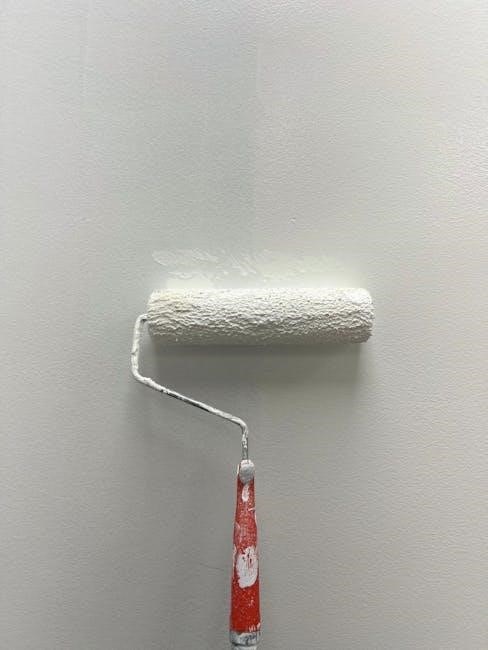
Identifying necessary repairs is crucial to ensure your renovation addresses all critical issues. Start by inspecting walls‚ floors‚ and ceilings for cracks or damage. Check windows and doors for proper sealing and functionality. Evaluate the condition of roofing‚ gutters‚ and downspouts to prevent water damage. Inspect electrical systems for outdated wiring or flickering lights‚ and plumbing for leaks or low water pressure. Assess HVAC systems for efficiency and reliability. Look for signs of pest or rodent infestation and mold growth. Document all issues and prioritize repairs based on urgency and budget. This step ensures your renovation is both functional and aesthetically pleasing‚ preventing costly surprises later.
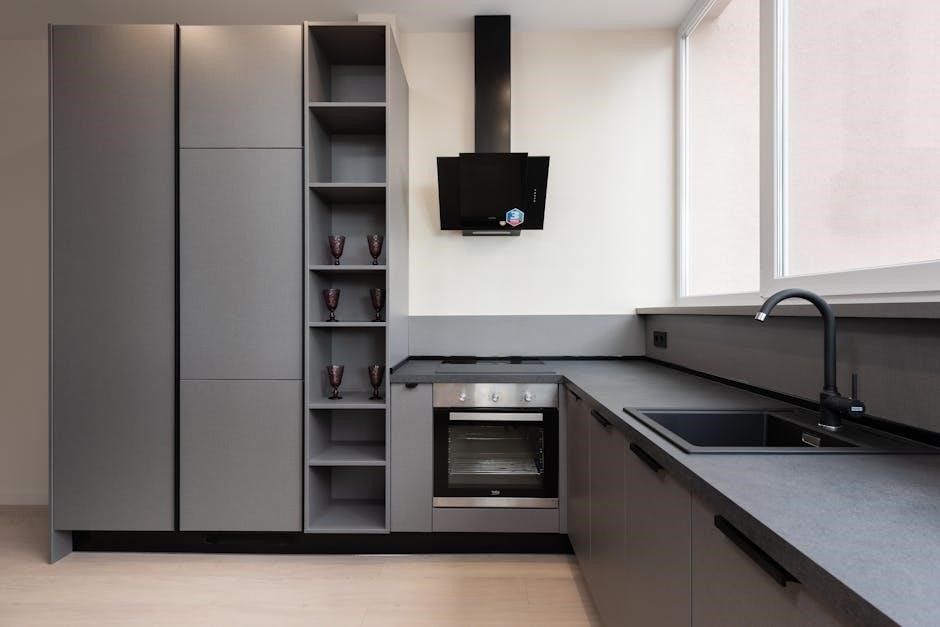
Design and Layout
Design and layout are crucial in whole house renovation‚ ensuring spaces are functional‚ aesthetically pleasing‚ aligning with your lifestyle. Proper planning enhances comfort and value.
4.1 Space Planning and Floor Plan
Space planning and floor plan design are crucial for maximizing functionality and aesthetics in your whole house renovation. Start by evaluating your current layout to identify inefficiencies and opportunities for improvement. Consider how each room will be used and prioritize spaces based on your lifestyle needs. Create a detailed floor plan that reflects your objectives‚ including precise measurements and the intended purpose of each area. Think about traffic flow‚ storage solutions‚ and how natural light can be optimized; Ensure your plan balances form and function‚ addressing both practical and aesthetic goals. This step ensures your renovation creates a cohesive‚ functional‚ and beautiful living environment tailored to your needs.
4.2 Choosing a Renovation Style
Choosing a renovation style is crucial for achieving a cohesive look. Consider your personal taste‚ lifestyle‚ and the architectural character of your home. Decide whether you prefer modern‚ traditional‚ minimalist‚ or rustic designs. Ensure the style aligns with your budget and functional needs. Consistency is key—select flooring‚ lighting‚ and fixtures that complement your chosen style. Research inspiration from magazines‚ websites‚ or showrooms to visualize your goals. A well-defined style will guide all design decisions‚ ensuring a harmonious and functional space that enhances your living experience. This step sets the foundation for selecting materials and finishes in later stages of your renovation journey.
4.3 Selecting Materials and Finishes
Selecting the right materials and finishes is crucial for achieving your desired aesthetic and functionality. Consider durability‚ maintenance‚ and cost when choosing flooring‚ countertops‚ and cabinetry. Durability is key for high-traffic areas‚ while aesthetic appeal should align with your renovation style. Compare materials like hardwood‚ laminate‚ tile‚ and quartz for their pros and cons. Maintenance requirements should also influence your decisions‚ especially for busy households. Finally‚ ensure your selections fit within your budget and align with your long-term goals for the space. Proper planning here ensures a cohesive and functional design.

Permits and Legal Requirements
Securing permits is crucial for compliance and avoiding fines. It involves understanding local building codes‚ obtaining necessary permits‚ and ensuring the renovation meets all legal standards.
5.1 Understanding Local Building Codes
Understanding local building codes is crucial for a compliant and safe renovation. These codes outline minimum standards for construction‚ ensuring your project meets safety‚ energy efficiency‚ and structural requirements. Research your area’s specific regulations‚ as they vary by location; Codes may cover aspects like electrical systems‚ plumbing‚ insulation‚ and fire safety. Non-compliance can result in fines‚ delays‚ or even project shutdowns. Familiarize yourself with zoning laws‚ permits‚ and inspections required. Consulting with local authorities or professionals can help navigate complex regulations. A thorough understanding ensures your renovation aligns with legal standards‚ avoiding costly mistakes and ensuring a smooth process. Compliance is key to a successful renovation.
5.2 Obtaining Necessary Permits
Obtaining necessary permits is a critical step in your whole house renovation. Permits ensure compliance with local building codes and safety standards‚ avoiding legal issues or fines. Start by identifying the types of permits required‚ such as electrical‚ plumbing‚ or structural permits. Submit detailed plans and applications to your local building department‚ paying associated fees. Approvals may take time‚ so plan accordingly to avoid delays. Hiring licensed professionals can streamline the process‚ as they often handle permit applications. Keep all permits on site for inspections and ensure they are approved before commencing work. Proper documentation is essential for a smooth renovation experience.
5.3 Ensuring Compliance with Regulations
Ensuring compliance with local building codes‚ zoning laws‚ and safety regulations is crucial for a legal and safe renovation. Start by researching local requirements and obtaining necessary permits. Hiring licensed professionals ensures adherence to standards. Regular inspections by authorities help verify compliance. Non-compliance can result in fines‚ project delays‚ or even shutdowns. Maintain clear documentation of all approvals and inspections. Compliance not only avoids legal issues but also guarantees a safe and durable renovation outcome. Always prioritize regulatory adherence to protect your investment and ensure peace of mind throughout the renovation process.
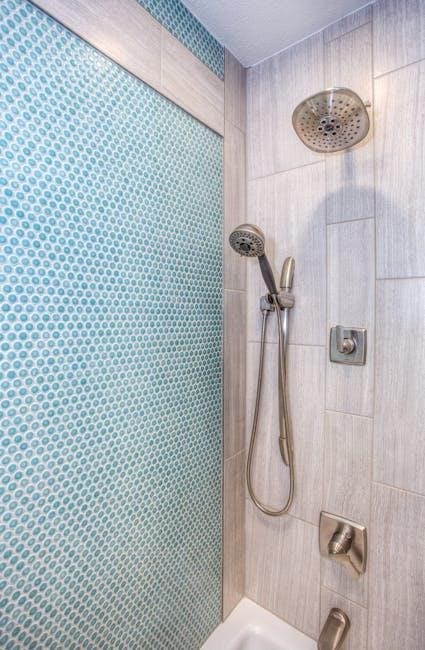
Preparing for the Renovation
Preparing your home involves clearing spaces‚ securing belongings‚ arranging temporary living‚ and disconnecting utilities to ensure a safe and efficient renovation process from start to finish.
6.1 Clearing and Protecting Belongings
Before starting your renovation‚ clear and protect your belongings to prevent damage and ensure a smooth process. Begin by sorting items into categories: keep‚ donate‚ sell‚ or discard. Pack non-essential items in sturdy boxes‚ labeling them by room and contents. Protect fragile items with bubble wrap or padding. Consider renting a storage unit or using a portable storage container for large furniture. Cover items that cannot be moved‚ such as built-in fixtures‚ with plastic or drop cloths. Take inventory of stored items to avoid loss. Finally‚ ensure all belongings are securely stored before work begins to prevent dust‚ debris‚ or accidental damage.
6.2 Temporary Living Arrangements
Securing temporary living arrangements is crucial during a whole house renovation. Start by evaluating your needs: safety‚ comfort‚ and proximity to your home. Research options like renting an apartment‚ staying with family or friends‚ or using a short-term rental. If staying elsewhere‚ create a temporary living checklist to ensure you pack essentials like clothing‚ toiletries‚ and important documents. Consider the duration of your stay and budget accordingly. Additionally‚ arrange for storage solutions for furniture and belongings. If you have pets‚ make provisions for their care or include them in your temporary living plans. Finally‚ confirm utility setups and ensure your temporary space meets all necessary requirements.
6.3 Preparing Utilities for Renovation
Preparing utilities is crucial to ensure a smooth renovation process. Start by notifying your electricity‚ water‚ and gas providers about the renovation timeline; Schedule temporary shut-offs for specific phases to avoid disruptions. Clearly label all utility shut-off points and ensure your team knows their locations. Consider backup power options for continuous lighting or essential systems. Verify that all utility lines are safely capped or rerouted if construction affects them. Additionally‚ plan for internet and cable services to be maintained or temporarily relocated. Consult professionals if you’re unsure about handling complex utility systems. A well-prepared utility plan minimizes delays and ensures safety throughout the project.

The Renovation Process
The renovation process involves three main phases: demolition‚ construction‚ and finishing touches. Each step requires precision and coordination to achieve your desired outcome successfully.
7.1 Demolition Phase
The demolition phase marks the start of your renovation journey‚ involving the removal of existing structures‚ fixtures‚ and materials. This step requires careful planning to avoid damage to remaining elements. Begin by clearing the space of furniture and valuables‚ then protect floors and walls with coverings. Disconnect utilities like electricity and water before commencing. Use specialized tools for tearing down walls‚ floors‚ or ceilings‚ ensuring safety protocols are followed. Hazardous materials like asbestos may need professional handling. Sort debris for recycling or disposal‚ adhering to local regulations. Document the process for future reference and ensure all areas are safe before proceeding to construction.
- Remove fixtures‚ flooring‚ and lighting.
- Protect areas not being demolished.
- Disconnect utilities and systems.
- Hire professionals for hazardous materials.
- Plan for waste management and recycling.
7.2 Construction and Installation
The construction and installation phase involves bringing your renovation plans to life. This step includes framing‚ installing electrical and plumbing systems‚ and putting in place insulation and drywall. Ensure all work aligns with approved blueprints and local building codes. Conduct regular inspections to verify quality and compliance. Use your checklist to track progress and address any issues promptly. This phase is critical for creating a safe and functional living space. Proper installation of systems and materials will ensure durability and efficiency. Maintain clear communication with contractors to stay on schedule and budget. A well-executed construction phase sets the foundation for a successful renovation outcome.
7.3 Finishing Touches
The final phase of your whole house renovation involves adding the finishing touches to bring your vision to life. This includes installing fixtures‚ flooring‚ and hardware‚ as well as applying the final coats of paint. Ensure all details‚ like trim work and moldings‚ are completed to perfection. Conduct a thorough inspection to address any imperfections or touch-ups needed. Finally‚ install lighting‚ appliances‚ and plumbing fixtures‚ and ensure all systems are fully functional. This stage is crucial for achieving both aesthetic appeal and functionality. Use your checklist to verify every element is completed before declaring the renovation finished. Attention to detail here will make your home renovation truly unforgettable.
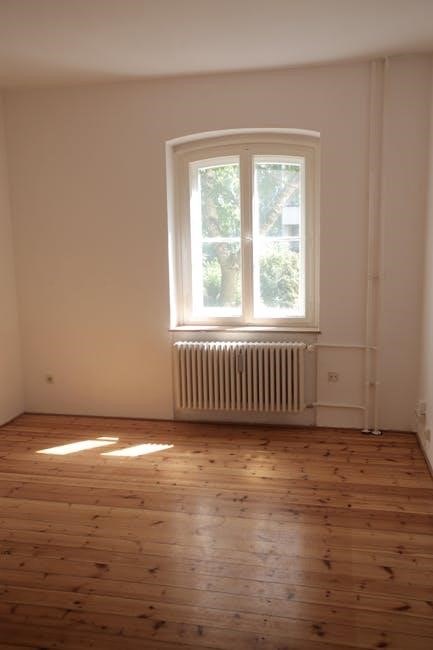
Post-Renovation Steps
After renovation‚ focus on final cleanup‚ inspections‚ and preparing your home for move-in. Ensure all systems function perfectly and address any remaining tasks for a seamless transition.
8.1 Cleaning Up the Property
Cleaning up after a whole house renovation is essential for a safe and welcoming environment. Start by removing construction debris‚ dust‚ and leftover materials. Hire professionals for heavy-duty cleanup or rent equipment like vacuums and pressure washers. Pay attention to corners‚ baseboards‚ and windows‚ which often accumulate dust and dirt. Protect floors and surfaces during the process. Don’t forget to clean less visible areas like ducts‚ vents‚ and behind appliances. Disinfect all surfaces‚ especially in kitchens and bathrooms. Ensure the yard is cleared of debris and tools. A thorough cleanup ensures your newly renovated space is ready for move-in and everyday use.
8.2 Conducting a Final Inspection
Conducting a final inspection is a critical step to ensure your renovation meets your expectations. Walk through your home with contractors and subcontractors to verify all work is complete. Check electrical systems‚ plumbing‚ HVAC‚ and flooring for proper function. Ensure all finishes‚ such as paint and trim‚ are flawless. Use your renovation checklist to cross-verify each task. Test appliances‚ fixtures‚ and systems to confirm they operate correctly. Address any defects or incomplete work during this phase. Once satisfied‚ obtain final approvals and certifications. This step ensures your home is safe‚ functional‚ and meets local building codes. A thorough inspection guarantees peace of mind and a successful renovation outcome.
8;3 Preparing for Move-In
After the renovation‚ prepare for a seamless move-in by organizing your belongings and ensuring everything is in order. Conduct a final walk-through to verify all systems are functional and address any issues. Arrange furniture and unpack essentials‚ prioritizing items needed for daily use. Check that utilities are operational and safety devices‚ like smoke detectors‚ are tested. Update your address with relevant services and notify friends and family of your return. Ensure keys are distributed to all necessary parties and review warranties for materials and labor. Finally‚ take time to familiarize yourself with the new layout and enjoy your refreshed living space.
Completing a whole house renovation is a significant achievement. This checklist ensures every step is covered‚ helping you transform your house into a beautiful‚ functional home effortlessly.
9.1 Final Checklist Review
Before completing your renovation‚ conduct a thorough review of your checklist to ensure all tasks are completed. This step guarantees that no details are overlooked‚ from structural work to finishes. Review each section‚ including budget adherence‚ contractor deliverables‚ and permit compliance. Verify that all electrical‚ plumbing‚ and HVAC systems function properly. Check that design elements align with your vision and that all materials meet quality standards. Address any punch-list items and confirm that post-renovation cleaning and inspections are finalized. A final review ensures your home is safe‚ functional‚ and ready for move-in. It’s your last chance to address issues before celebrating your newly renovated space!
9.2 Tips for a Smooth Renovation Experience
For a seamless renovation‚ maintain clear communication with contractors and stay flexible. Regularly update your checklist and budget to adapt to changes. Plan for contingencies and prioritize tasks to minimize delays. Keep essential items accessible and protect sensitive areas from dust. Schedule inspections early to address issues promptly. Stay organized with a project binder or digital tool. Ensure all permits are secured beforehand to avoid halts. Consider eco-friendly options for sustainability. Keep a record of warranties and instructions for new installations. Finally‚ celebrate milestones to stay motivated throughout the process.

Additional Resources
Explore essential tools and materials to streamline your renovation. Download our comprehensive Whole House Renovation Checklist PDF for expert guidance and efficiency throughout your project.
10.1 Downloadable Whole House Renovation Checklist PDF
A downloadable whole house renovation checklist PDF is an essential tool for organizing your project. It provides a structured approach to track progress‚ ensure no details are overlooked‚ and maintain timelines. With a comprehensive PDF checklist‚ you can easily share it with contractors‚ designers‚ and family members‚ keeping everyone aligned. It typically includes sections for budgeting‚ permits‚ materials‚ and timelines. The PDF format allows for easy printing and digital access‚ making it a convenient resource throughout your renovation journey. Downloading a checklist ensures clarity and accountability‚ helping you achieve your renovation goals efficiently and stress-free.
10.2 Recommended Tools and Materials
Having the right tools and materials is essential for a successful whole house renovation. Basic tools include hammers‚ screwdrivers‚ drills‚ and saws. For specialized tasks‚ consider renting equipment like sanders or jackhammers. Materials such as lumber‚ drywall‚ paint‚ and flooring are must-haves. Invest in quality fasteners‚ adhesives‚ and sealants for durability. Don’t forget safety gear like gloves‚ goggles‚ and a first-aid kit. For plumbing and electrical work‚ stock up on pipes‚ fittings‚ and wiring supplies. A well-stocked toolkit and material list will ensure efficiency and professionalism in your renovation project. Always compare prices and quality before making purchases to stay within budget.
